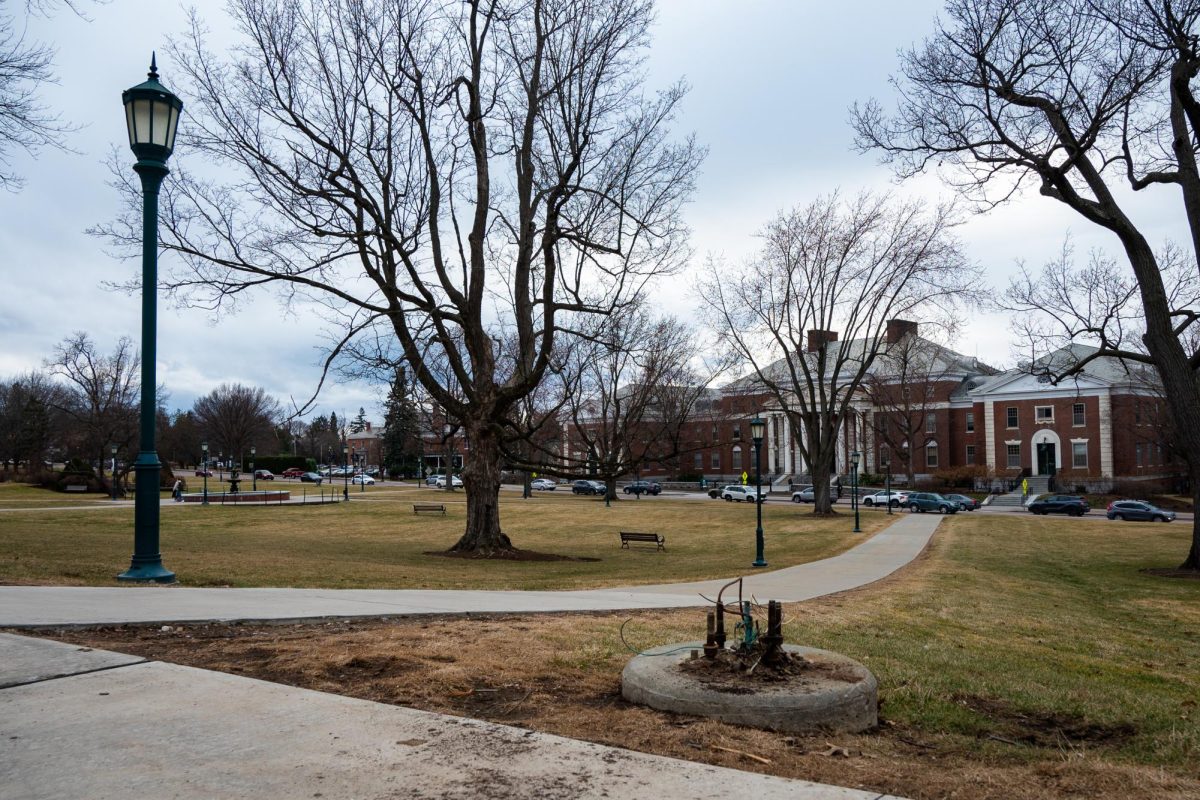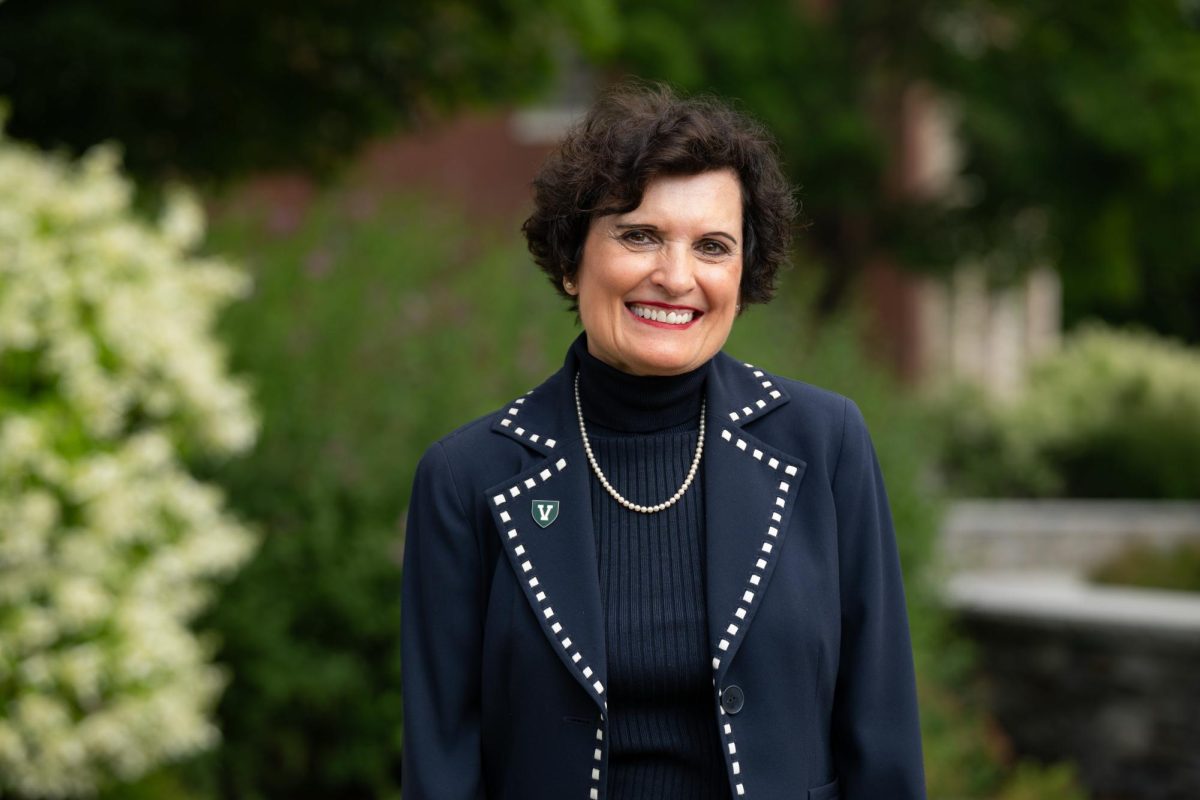Jean Anouilh’s 1947 French farce, Ring Round the Moon, brings into conflict the ludicrous social customs of early twentieth century bourgeois society and their friction-filled interactions with the working class. Adapted into English by Christopher Fry in 1950, this dialogue-driven play takes place in the 1930’s, emphasizing the feminized, form-fitting fashions trends. This time period allows the UVM Theatre Department to play with costuming and set design in very aesthetically pleasing ways.The performance takes place in a winter garden, (similar to a greenhouse), in the springtime and the stage is magnificently transformed with potted plants surrounding all sides of the stage, a decadent pale pink marble floor, two lacquered ramps creating a bi-level stage, and three sets of glass and gold-trimmed French doors covering the back wall of the proscenium.The lighting for the show was inventive in its placement of backlights behind the French doors, adding a dimension of life to the offstage actions. For example, during the third and final act, there is a raucous Ball taking place at the home of Madame Desmortes (played by Alli Shapiro) where the dramatic tensions of the plot are heightened. However, the audience never actually sees the Ball, but is encouraged to believe it by the suggestions of the lighting and the actor’s physical movements between the offstage party and the onstage dramatic action.Also adding to the plot’s believability is the moonlight aura created during the nighttime scenes through subtle blue lighting effects. Because the play begins in the morning and continues until the following dawn, these visual accents supplement the audiences understanding of time and place.While the visual aspects of the play were well arranged and functionally on key, the shortcomings however, were basic plot comprehensibility. As the scenic designer, Jeff Modereger pointed out, the play employs fun language and that is where the humor is; making sure the audience can hear everything is crucial. “This play is dependent on the words for character development,” Modereger explained.During the first of two intermissions, a middle-aged man and his wife approached me. Throwing his up hands in defeat, the gentleman asked if I could please explain what had taken place in Act I. He didn’t understand the relationships between the characters, or where the randomly arrived working-class mother and daughter came from, or why one of the twin brothers was plotting against the other one. As I tried to answer all of his questions, I realized that I couldn’t quite explain each character’s role, or at what point in the plot the play was actually at. Standing in line for cookies and apple juice, his wife and my boyfriend began piping in helpful details, but between the four of us we were lost.By choosing a play about language that is sophisticated and comedic, director Sarah E. Carleton was hoping to give students the opportunity to play roles they had not previously confronted. For instance, the butler, Joshua (played by Christopher Cohen), was put into a context of an enormous social gap, constantly dealing with his melodramatic bourgeois employers.This policy of giving students the space toexpand their acting capabilities encouragedthe faculty to choose Ring Round theMoon.Above all though, the goal of each production is to focus on a piece that weaves together an array of theatrical elements to create a laboratory for Theatre students to experiment within. Modereger rationalized the importance of incorporating other disciplines as well, like History, English and Women and Gender Studies. “If we can tie it in to one of those classes, we can turn it back into an experience for UVM and the faculty.”Unfortunately, the vocal aspects of the play were a hindrance and the performers were not able to handle the responsibility of the dialogue dependent plot. With the exception of Lizzie Chazen, who played the rambunctious lower-class mother to Isabelle, Will Todisco who played the wealthy, noodle-eating Messerschmann, Alli Shapiro who played the handicapped Madame Desmortes, and Adam Yeager Gould who played the lead role of both the identical twins Hugo and Frederic, the acting was either difficult to believe, under-emphasized or over-acted.The fact that the production is designed by the faculty but executed by the students is crucial in understanding the amount of work that went into the play. This comes off very clearly to the audience, which almost makes the verbal disconnect all the more disappointing. Clocking in at a full three hours, with two intermissions, the play’s rhetoric-dependency makes it somewhat exhausting to watch and frustrating to piece together. In the end, the Theatre Department receives accolades for the ornate set design and lighting technique, but upon choosing next years productions they need to keep in mind the limits of student theatre.
Categories:
UVM Theater Delivers with Set Design; Struggles with Dialogue
March 14, 2006
0
More to Discover







